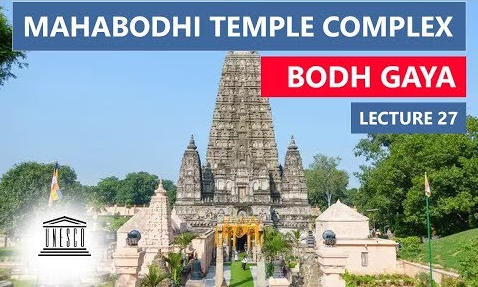Table of Contents
CULTURAL SITES
- Agra Fort (1983)
- Ajanta Caves (1983)
- Archaeological Site of Nalanda Mahavihara at Nalanda, Bihar (2016)
- Buddhist Monuments at Sanchi(1989)
- Champaner-Pavagadh Archaeological Park (2004)
- Chhatrapati Shivaji Terminus (formerly Victoria Terminus) (2004)
- Churches and Convents of Goa(1986)
- Elephanta Caves (1987)
- Ellora Caves (1983)
- Fatehpur Sikri (1986)
- Great Living Chola Temples (1987,2004)
- Group of Monuments at Hampi (1986)
- Group of Monuments at Mahabalipuram (1984)
- Group of Monuments at Pattadakal (1987)
- Hill Forts of Rajasthan (2013)
- Historic City of Ahmadabad (2017)
CULTURAL SITES
- Humayun’s Tomb, Delhi (1993)
- Khajuraho Group of Monuments (1986)
- Mahabodhi Temple Complex at Bodh Gaya (2002)
- Mountain Railways of India (1999,2005,2008)
- Qutb Minar and its Monuments, Delhi (1993)
- Rani-ki-Vav (the Queen’s Stepwell) at Patan, Gujarat (2014)
- Red Fort Complex (2007)
- Rock Shelters of Bhimbetka (2003)
- Sun Temple, Konârak (1984)
- Taj Mahal (1983)
- The Architectural Work of Le Corbusier, an Outstanding Contribution to the Modern Movement (2016)
- The Jantar Mantar, Jaipur (2010)
- Victorian Gothic and Art Deco Ensembles of Mumbai (2018)
NATURAL
- Great Himalayan National Park Conservation Area (2014)
- Kaziranga National Park (1985)
- Keoladeo National Park (1985)
- Manas Wildlife Sanctuary (1985)
- Nanda Devi and Valley of Flowers National Park(1988,2005)
- Sundarbans National Park (1987)
- Western Ghats(2012)
Mixed
- Khangchendzonga National Park (2016)
BODH GAYA
- The site contains a descendant of the Bodhi Tree under which Buddha gained enlightenment, and has been a major pilgrimage destination for Hindus and Buddhists for well over two thousand years.
- The site consists of the main temple and six sacred places within an enclosed area, and a seventh one, the Lotus Pond, just outside the enclosure to the south.
- The temple complex includes two large straight-sided shikhara towers, the largest over 55 metres (180 feet) high. In June 2002, the Mahabodhi Temple became a UNESCO World Heritage Site.
HISTORY
- Traditional accounts say that, around 589 BCE, Siddhartha Gautama sat in meditation under a peepul tree which later became known as the Bodhi tree.
- According to Buddhist scriptures, after three days and three nights, Siddharta attained enlightenment and the answers that he had sought. In that location, Mahabodhi Temple was built by Emperor Ashoka in around 260 BCE.
- The Buddha then spent the succeeding seven weeks at seven different spots in the vicinity meditating and considering his experience.
HISTORY
- Several specific places at the current Mahabodhi Temple relate to the traditions surrounding these seven weeks:
- The first week was spent under the Bodhi tree.
- During the second week, the Buddha remained standing and stared, uninterrupted, at the Bodhi tree. This spot is marked by the Animeshlocha Stupa, that is, the unblinking stupa or shrine, to the north-east of the Mahabodhi Temple complex. There stands a statue of Buddha with his eyes fixed towards the Bodhi tree.
- He spent the fourth week near Ratnagar Chaitya, to the north-east side.
- During the fifth week, Buddha answered in details to the queries of Brahmins under the Ajapala Nigodh tree, now marked by a pillar.
- He spent the sixth week next to the Lotus pond.
- He spent the seventh week under the Rajyatna tree
BODHI TREE

RAILINGS

PLASTER COPY OF SUNGA RAILINGS
STUPA BOVE PYRAMIDAL STRUCTURE
MUCALINDA LAKE
ARCHITECTURE
- Mahabodhi Temple is constructed of brick and is one of the oldest brick structures to have survived in eastern India. It is considered to be a fine example of Indian brickwork.
- The Mahabodhi Temple is surrounded on all four sides by stone railings, about two metres high. The railings reveal two distinct types, both in style as well as the materials used.
- The Bihar state government assumed responsibility for the protection, management, and monitoring of temple and its properties when India gained its independence.

























 WhatsApp
WhatsApp